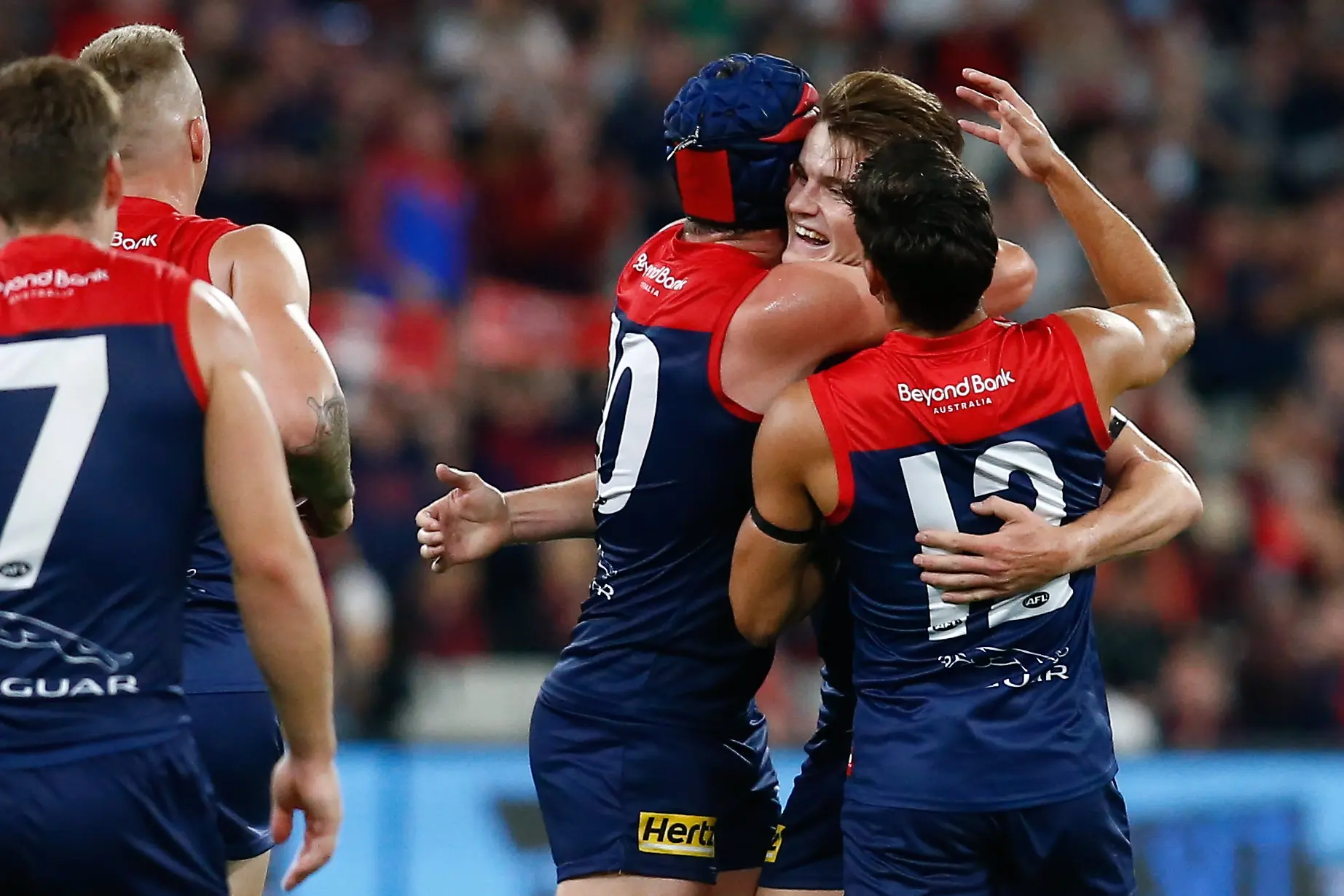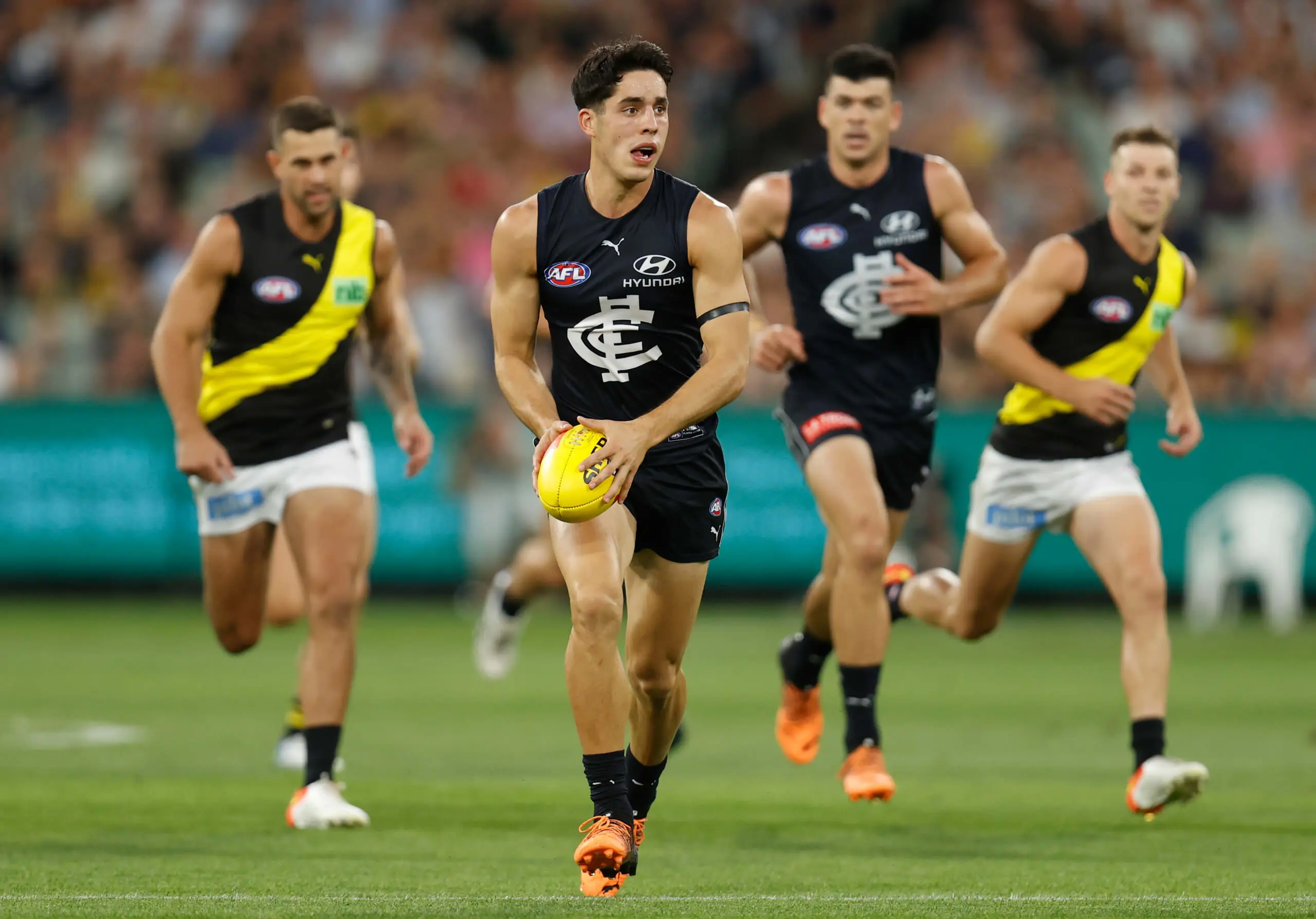AFL fixturing. Some people love avidly scrolling through their club's calendar to observe which team plays who each round, whereas some couldn't care less. That is the essence of filtering.
Over the last three seasons, the AFL has been required to run with a rolling fixture due to the COVID-19 pandemic, dividing the fixture into blocks, with this season setting out Rounds 1-8 before finalising the rest of the fixture layer into the year.
But what about those next block of fixtures? Having the fixture set in stone from the offset at least gives a sense of understanding. And what about the supporters who want to plan ahead? Surely those who pay their hard earned money deserve clarification and not to be left in the dark. After all, it is the supporters who make the game. Without them there wouldn't be a competition.
The AFL's fixturing looks set on returning back to normal, with Rounds 1-15 next season to be announced with the fixture's release, while the 23rd and final round is set to be a floating fixture.
Scheduling the game's marquee matchups only adds to the intrigue of the final round of the season. As we saw with the Sunday afternoon blockbuster between Carlton and Collingwood this season.
A year ago, this matchup wouldn't have been predicted the same level of hype considering Collingwood's 17th place finish and Carlton's inability to register a top eight spot.
When COVID hit in March 2020, the AFL found themselves in a great level of uncertainty, with games played in front of empty crowds. A strange, eerie feeling.
Even midway through last season, Round 11 matches in Victoria were in front of no spectators. Unfortunately, it would be the same occurrence again from Rounds 18-23 after a spectator attended the Carlton-Geelong Round 17 clash whilst COVID positive.
For the game all Melbournians crave, it was crushing to the soul. Not being able to attend the footy and barrack loudly and proudly for their team.
Heading into this season, uncertainty of COVID was still lurking in the air as to whether games would be played behind closed doors. Those fears would be laid to rest as AFL Chief Executive Gillon McLachlan confirmed there would be a full 100% capacity at all matches in Victoria. By the time the season opener between last year's grand finalists of Melbourne and the Western Bulldogs took place at the MCG, the feeling of footy was back.

The next night Carlton and Richmond would play in front of 72,179 fans - the largest attendance in Melbourne since the 2021 ANZAC Day clash between Collingwood and Essendon (78,113). Though something was still missing...
Crowd attendances were at their lowest in 26 years despite the five games in the opening round in Melbourne averaging 52,620 spectators. But take into consideration COVID-19 restrictions at football matches, with Perth's Optus Stadium reduced to 25% capacity at the start of the season.
Still, 2022 saw crowds return to their masses. Most notably the Carlton-Collingwood Round 23 clash (88,287), Melbourne-Collingwood Round 21 clash (70,596), and the Essendon-Collingwood ANZAC Day match (84,205).
Yes, COVID has had a major impact on crowd attendances, excluding the two-ravaged seasons in 2020 and 2021. However, the fixturing has plenty of adjusting moving forward. Remember when the league decided to implement the big clubs playing under the Friday night lights? In hindsight, the idea became a disaster.
In 2018, Carlton - while in one of its lowest ebbs on route to the club's fifth wooden spoon, had four Friday night games, which they lost all four. Could you blame the AFL for this? Maybe, unless in the case of Port Adelaide in 2012 rising from 14th all the way to the semi-finals in 2013.
But that season, the Power didn't get any blockbuster Friday night matches. Why? Because it is too hard to predict where a side is going to finish, especially when placing in the bottom four.
The same case applies to Essendon. After reaching finals in 2009 after a five-year absence, expectations for the Bombers were another September appearance. So in 2010, the AFL when releasing its fixture in October the previous year gave the club seven Friday night games - two more than premiers Collingwood, runners-up St Kilda, and preliminary finalists the Western Bulldogs. Why? Because the Bombers are one of the major clubs in the league.
Unfortunately, the Bombers' season would be a flop, finishing third last on the ladder. However, not even the best footy minds in the business can predict whether a team treads water or rises despite a blockbuster set of games either on a Friday night, Saturday afternoon or Saturday night. At least in the last couple of seasons, the league is giving more blockbuster games to sides who consistently perform.
Moving on... What has come to light has been the introduction of Thursday night games. Gaining in popularity, the league first introduced the concept in 2011 - barring the traditional Carlton-Richmond which has been in place since 2007. Two matches on a Thursday night would go ahead in consecutive rounds between Brisbane - St Kilda in Round 5 and West Coast - Melbourne in Round 6.
The next season, two more Thursday night matches would feature with Carlton in both against Brisbane in Round 2 and West Coast in Round 12. Since then, the Thursday night fixture has been a success, with a record 10 matches played in Season 2022. I
In April last year, the AFL's Head of Broadcasting and Scheduling Marcus King said it is about "taking into account attendance and factors". It is for certain Thursday night football has been a success - a far disparity from Monday night football from 2009 to 2013 until its demise. Not to mention the questionable three Sunday night encounters in 2014.
Adding to the intrigue of the fixturing in 2023 and beyond is applying the opening 17 rounds, where each team plays one another. Why? Because it makes logical sense. This season saw many instances of clubs playing each other twice before facing an opponent for the first time.

Carlton played Richmond twice before squaring off against Brisbane and Melbourne in Rounds 21 and 22. The Western Bulldogs and Melbourne clashed twice before the Demons had faced the Blues, and Collingwood and Essendon squared off before the Magpies even played Port Adelaide in Round 20.
These particular scenarios are manageable and must be brought into action. Starting off with the basics is fairly simple. The Carlton and Richmond Thursday night opener, the ANZAC Day clash, the Showdown, and the Western Derby. The list goes on. From there, addressing Rounds 18-23 should be straightforward.
With the fixturing facing its share of conundrums, the glaring aspect has been the start times, particularly Friday night matches. Before the league decided to begin Friday night encounters at 7:50 pm in 2011, matches began at 7:40 pm until the end of 2010. Even the prime time Saturday night fixtures have seen a change dating back to 2012, starting at 7:25 pm whereas before beginning at 7:10 pm.
Adding to this topsy turvy fixturing changes is the Sunday afternoon slot. For as long as the fixture has been running for, the 2:10 pm start would be the ideal fit not only for the teams, but for spectators and young families attending.
Unfortunately, since shifting to a 3:20 pm start in 2013, more particularly this season, it has been a glaring issue. Taking into consideration the Round 13 clash between North Melbourne and GWS which attracted only 13,742 spectators.
Hopefully, by the end of October we will find what the fixturing for season 2023 looks like and whether the league will implement changing times.






